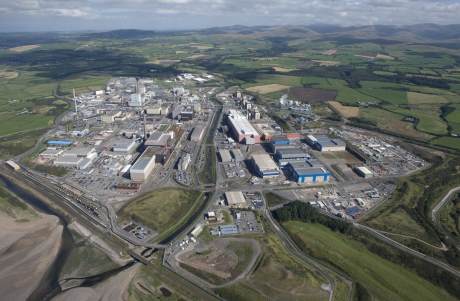Joint venture wins Sellafield contract
29 September 2014
A joint venture of Jacobs, Amec and Balfour Beatty has won an engineering, procurement and construction (EPC) framework contract to provide a new facility to treat and immobilize hazardous wastes from the decommissioning of the UK's nuclear legacy facilities.
 |
| Sellafield: the UK's largest nuclear site presents many decommissioning challenges (Image: Sellafield Ltd) |
The Box Encapsulation Plant (BEP) will treat nuclear waste recovered from Sellafield's Magnox Swarf Storage Silos (MSSS), immobilise it and prepare it for long-term storage. The three joint venture partners will be responsible for the complete life cycle of the plant construction project, from design, engineering, procurement, installation and construction management through to commissioning and handover. Work is scheduled to start within the fourth quarter of 2014.
Hunterston contract
The Sellafield contract comes days after Balfour Beatty was awarded a £34 million ($55 million) contract to deliver a facility to encapsulate solid intermediate-level waste (ILW) at the Hunterston nuclear power plant in Scotland.
The Solid Intermediate Level Waste Encapsulation (SILWE) contract will see the company complete the final design work of the encapsulation process as well as constructing the plant which will encapsulate solid ILW that has been stored in bunkers since the Magnox plant ceased operations in 1989. The facility is due to be completed by the first quarter of 2017.
The framework contract is potentially worth between £240 million and £336 million (between $390 million and $546 million) over up to four years. The joint venture partners, who have promised to engage local small and medium businesses in their supply chain, will share the financial terms equally.
The silos encompassed by the MSSS project were built to accommodate the swarf waste produced by the decanning of Magnox fuel prior to reprocessing. The swarf was stored underwater, and the first facility of six silos began operations in 1964. By 1983 a total of 22 silos had been built, but by the early 1990s wet storage of Magnox swarf was superseded by dry storage. The Magnox Encapsulation Plant was built to receive dry Magnox swarf, encapsulate it in cement and seal it in stainless steel drums. The MSSS are now being decommissioned.
As well as treating wastes from the MSSS, the BEP may also be used to process waste from the decommissioning of Sellafield's other legacy pond and silo facilities, including the First General Magnox Storage Pond (FGMSP) and the Pile Fuel Storage Pond (PFSP).
Sellafield Ltd chief projects officer Scott Reeder said that BEP would be a vital step in the company's mission to safely clean up and decommission all high-hazard facilities at Sellafield.
Researched and written
by World Nuclear News